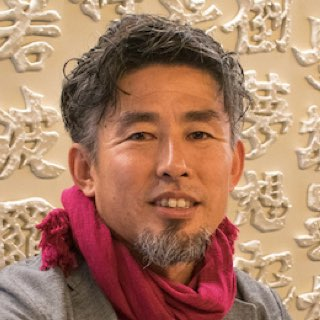
COLUMN
Search by keyword
- All
- Ryotei & Restaurants
- Lodging/Hotels
- Producers
- Technology
- DX (Digital) & SNS
- City Planning
- Utilization
- Gastronomy and Culinary
- Japanese Nature
- Japanese history and traditional culture
- Japanese Food Culture
- Agriculture
- Fisheries
- SDGs
- Local production for local consumption
- Foreigner Activation
- Experience
- Overseas Expansion
- Fermentation
- Public-private partnerships and collaborations
- Sake
- Community Revitalization
- Spirituality
- Japan of the Sea
- Mountain Japan
VIEW ALL
-
Read more

13 Pointers for Circular Economies from Satoyama Culture
More than ten years have passed since COP10 was held in Nagoya and the world was introduced to the concept of satoyama—a unique environment where people and nature coexist in harmony— and the concept seems to be gradually taking root. Elsewhere, the impacts of climate change are becoming more apparent worldwide, and the COVID-19 pandemic has demonstrated the need for society to take a new direction. While the definition of circular economy seems to vary to region, the main concept is that—in contrast to a linear economy (use and dispose) and even reuse—a system where used products and materials disposed in the production process are reproduced into new products, given new value, and then sold again. In many rural regions of Japan, where the satoyama wisdom has been passed down from generations to generations, this circular approach is a core of people’s lives and continues to this day. With rice, for example, the ingredient in Japanese sake and sushi, both of which are becoming increasing popular worldwide, an incredibly efficient cycle has been in place for generations. It is a well-known fact that sake lees, a byproduct of sake brewing, are used to make amazake (a sweet, non-alcoholic sake) and a wide range of pickles including Narazuke. Meanwhile, in the production of daiginjo and other types of sake with high rice polishing ratio, a large amount of rice flour is generated as a byproduct. This rice flour is reused in rice crackers and dumplings. Rice bran is another byproduct of the production process, and in the Hida area of Japan where I live, this has been reused as a kind of wax for polishing the floors and pillars of wooden houses for many years. Further, after the rice bran has been used to care for the home, it is then scattered onto nearby fields, returned to the soil, and reused as fertilizer for new crops. Examples such as these are too numerous to see throughout satoyama areas. Another example can be seen in the use of the kaya grasses used to make thatched roofs, such as those in the UNESCO World Heritage site of Shirakawa-go. Harvested grass is used as snow shelters in the drying process, and then used for thatched roofs after drying. Later, part of the roof that have been damaged by wind and rain is removed and reused as livestock feed. This is then digested by the […]
-
Read more

11 The Direction of Japan as a Tourism Hotspot—Terroir and SBNR through VISON
The French word terroir, frequently used in the wine industry, comes from another French word, terre, meaning “land.” Terroir refers to a combination of natural factors that give products their unique, locally rooted characteristics, including geography, terrain, and climate. At BuzzFeed, which is one of the largest digital media outlets in the US and Japan, we feature various articles from a diverse range of fields. During the pandemic, however, when there were restrictions on returning home and other forms of travel, there was a particular rise in interest in news about locally rooted food. In FY2021, we released 34 articles tagged #deliciouslocalfood, which were shared more than 25,000 times on social media, accumulating more than 1.25 million views. In this article, I would like to consider how to apply current reader interest to post-COVID-19 tourism. VISON, one of Japan’s largest commercial resorts, opened in July 2021 in Mie Prefecture based on the concept “Alongside Our Region.” Mainly through markets offering fresh fish from the nearby Kumano-nada sea and fresh local vegetables, as well as restaurants and hotels, VISON aims to provide experiences based on “healing, food, and knowledge,” combining tradition and innovation to revitalize and create new regional economies. At the same time, VISON also plays a key role in solving regional issues that are common throughout rural areas in Japan, including population decline, ageing communities, and worker shortages in agriculture and forestry. The core concept of this resort is terroir, or in other words, local production for local consumption. By providing this terroir and attracting people from outside the region—who typically spend more than local customers—, the region can acquire foreign currency. In turn, this can help maintain high wages and ensure high-quality local employment. Using cuisine to communicate the appeals of the region’s ingredients, culture and worldviews to visitors from outside the region can ultimately help to solve the issues that the region faces. To solve local issues through the new employment of 1,000 people, VISON is aiming to attract around eight million visitors a year, which is around the same number as one of Mie’s most popular tourist destination, Ise Jingu Shrine. Meanwhile, interest in “spiritual but not religious (SBNR)” activities, such as mindfulness, meditation, and yoga, is growing on a global scale. According to the Pew Research Center in the US, approximately a quarter (27%) of American adults consider themselves to be SBNR. The prolonged pandemic […]

